This post follows on from my previous work making an autofocus UV lens using a Nikon 50mm f1.8 lens body (which you can read about here). Having a basic autofocus lens body like this makes it possible to swap other lenses in and out and test how they perform. Camera lenses themselves vary from incredibly simple (a single element, or even a pinhole) through to extremely complicated (up to 20 or more individual glass elements). For UV imaging, simpler is usually better – fewer elements means less glass, and fewer air/glass interfaces. When it comes to simple lenses, there are a few much more simple than a single mensicus lens. This leads us to the one used for the conversion discussed here today – the lens from a Boyer Serie VIII camera. Here is the lens mounted into the Nikon 50mm f1.8 autofocus lens body and on the camera (note the use of white-tac to keep it in place – yes, sometimes simpler is better).
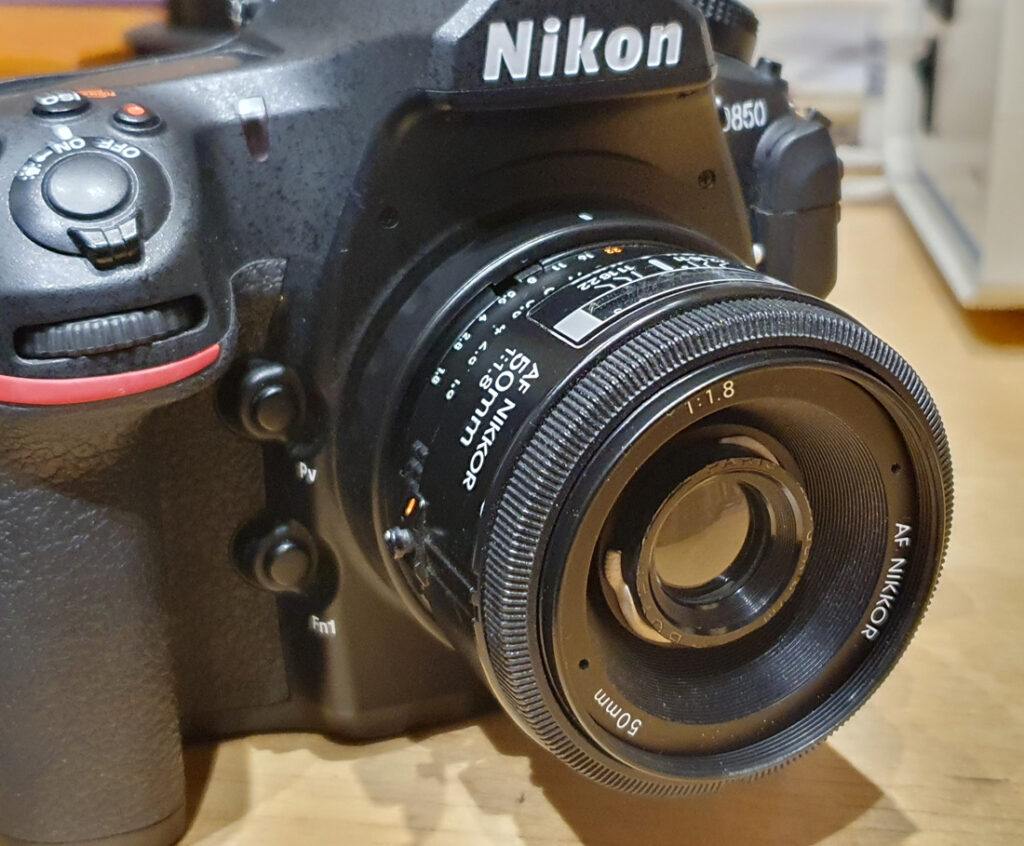
What did this lens come from? Originally it was in a Boyer Serie VIII roll film camera as shown below.
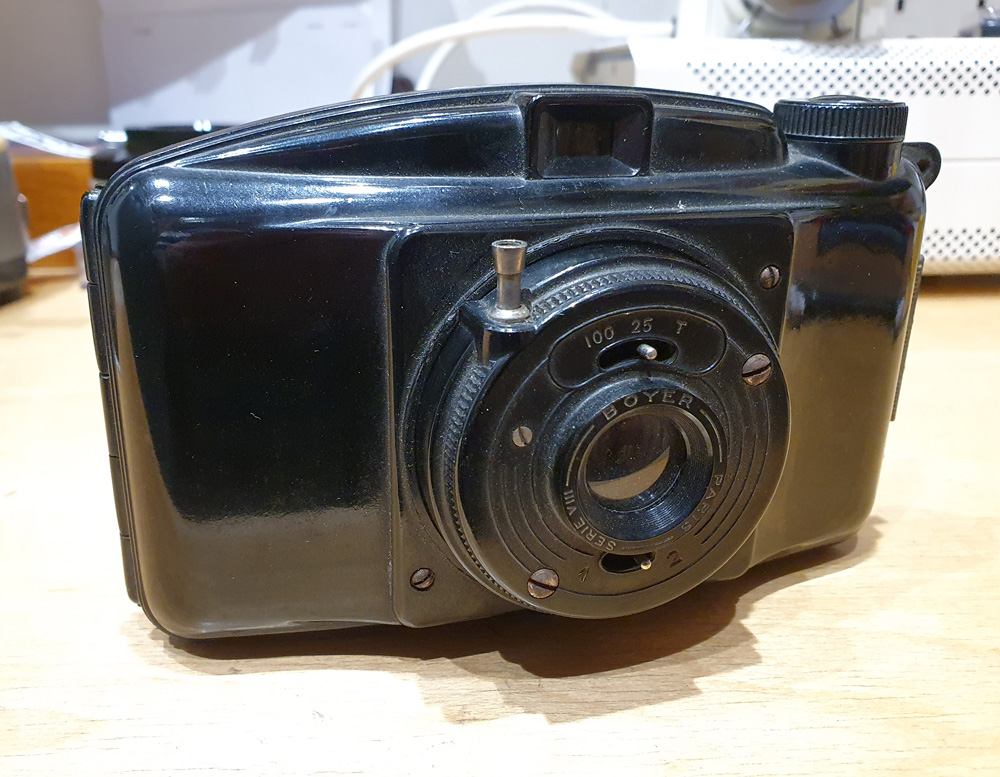
The camera was bought from eBay for about 10GBP and was non functional (the shutter was all gummed up). The fact that it wasn’t working wasn’t an issue for me as I only wanted the lens. After a bit of time with a Dremel and a hand file (and a mask as the dust from cutting the Bakelite was horrendous) the lens was removed.
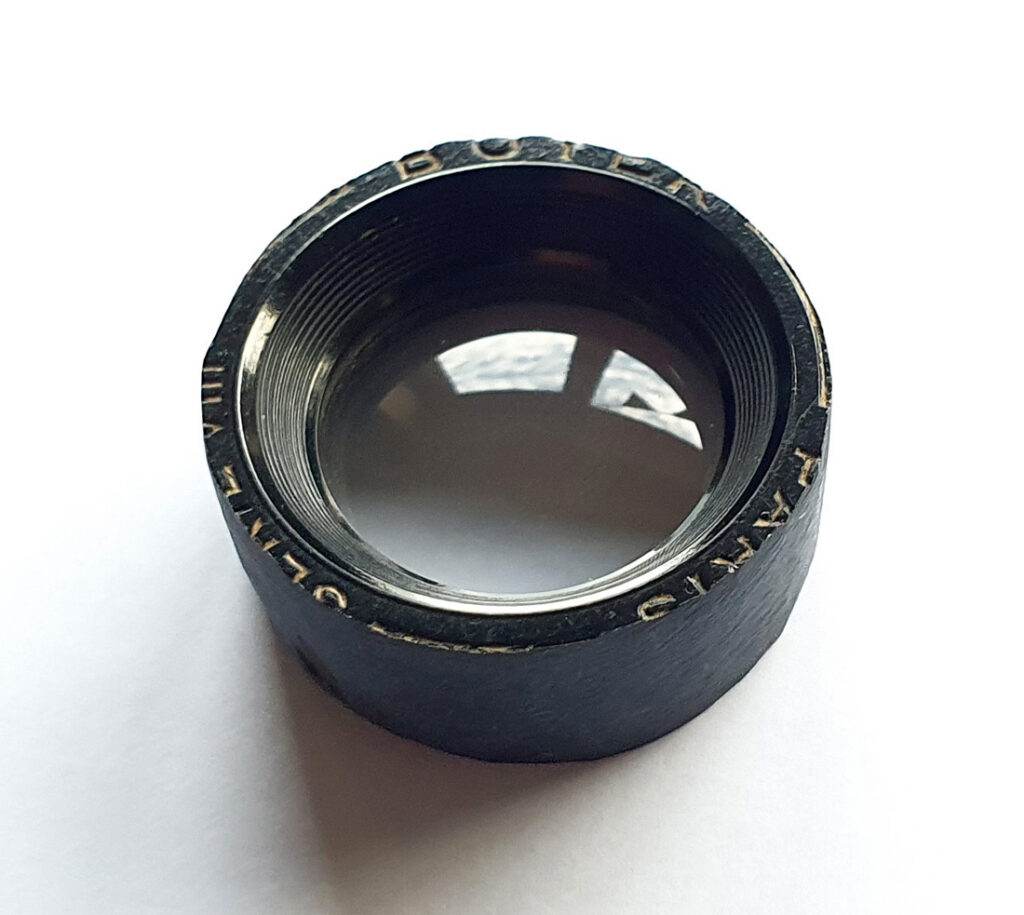
This was cut to the right diameter to fit into a Thorlabs SM1 mount which I’d put on the lens body. The Boyer lens itself seems to have a focal length of around 60mm and is a single meniscus element. I started this little project thinking that it might be handy as a cheap lens for UV imaging, and the transmission spectrum of it looks promising, as it is letting through light down to about 300nm which for a normal glass lens is pretty good (quartz, fused silica or calcium fluoride would obviously go lower, but would not cost 10GBP).
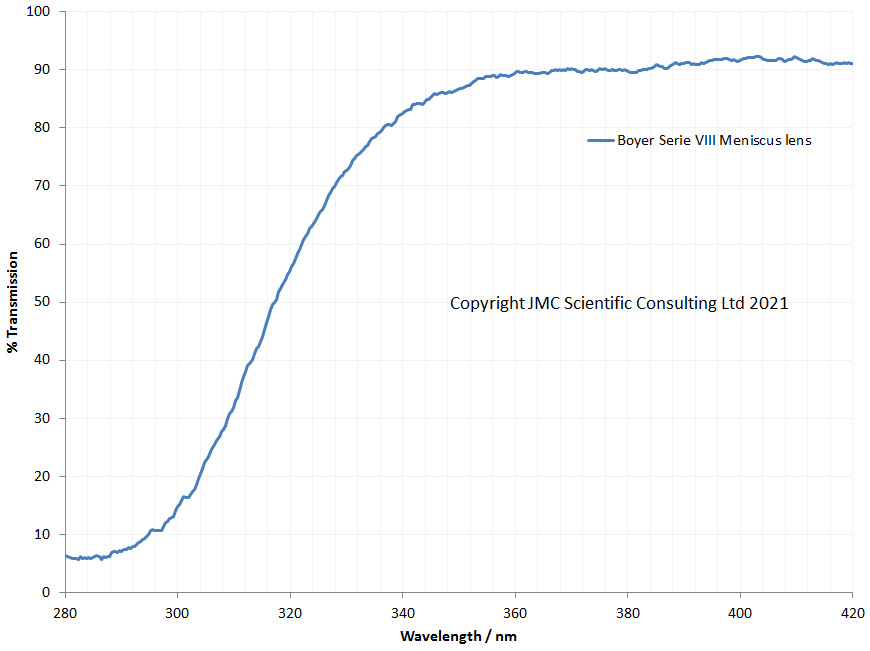
With a 11mm extension tube between the lens and camera body, this will focus from infinity down to about 1m in normal visible light which isn’t too bad for usability. I’d expect some shift of that focus range in UV, and I might need to get rid of the extension tube when using it there.
I took a few test shots in the garden today (nice, dull, grey December day, the joys of English winters). These were taken on my monochrome Nikon d850, with no filters (this will be visible and a bit of IR and a little UV) and no lens hood. All at ISO 640 and varying the f stop setting from f1.8 to f22. It should be kept in mind though that the focal length of this lens is not 50mm so the absolute f stop values are not relevant here.
Here’s it wide open at f1.8;
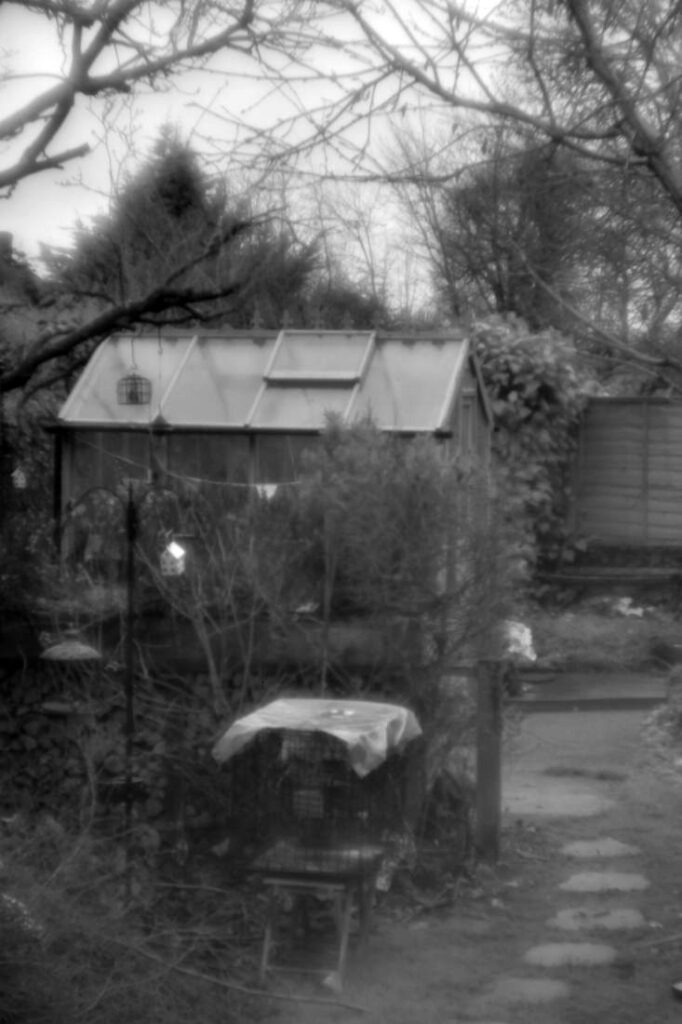
At f1.8 the image is very soft and glowy, which is not a huge surprise.
Now at f2.8;
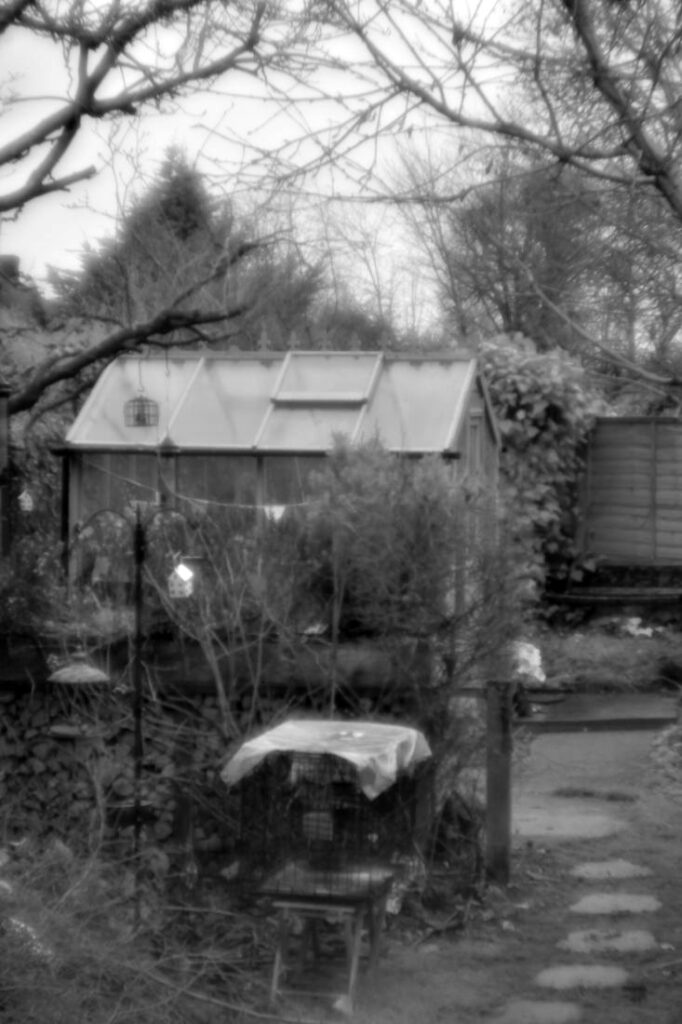
At f2.8 it is slightly less soft, and contrast has improved slightly.
Next f4;

At f4 there is a big increase in contrast.
Now, f5.6;
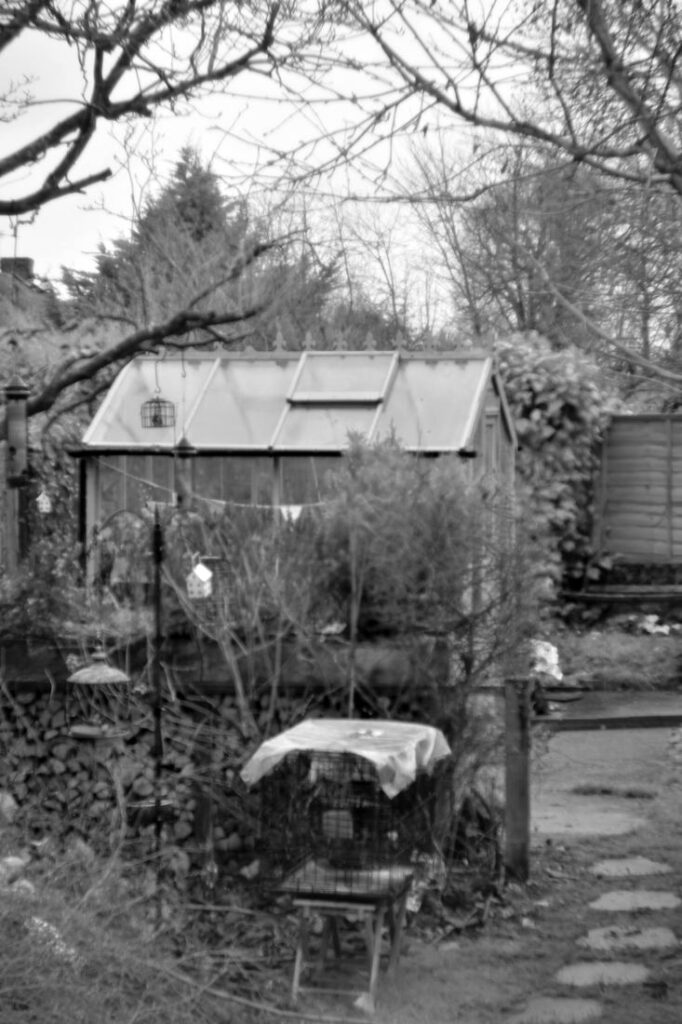
F5.6 is similar to f4, and this behaviour continues through to f22 along with an increase in depth of field;
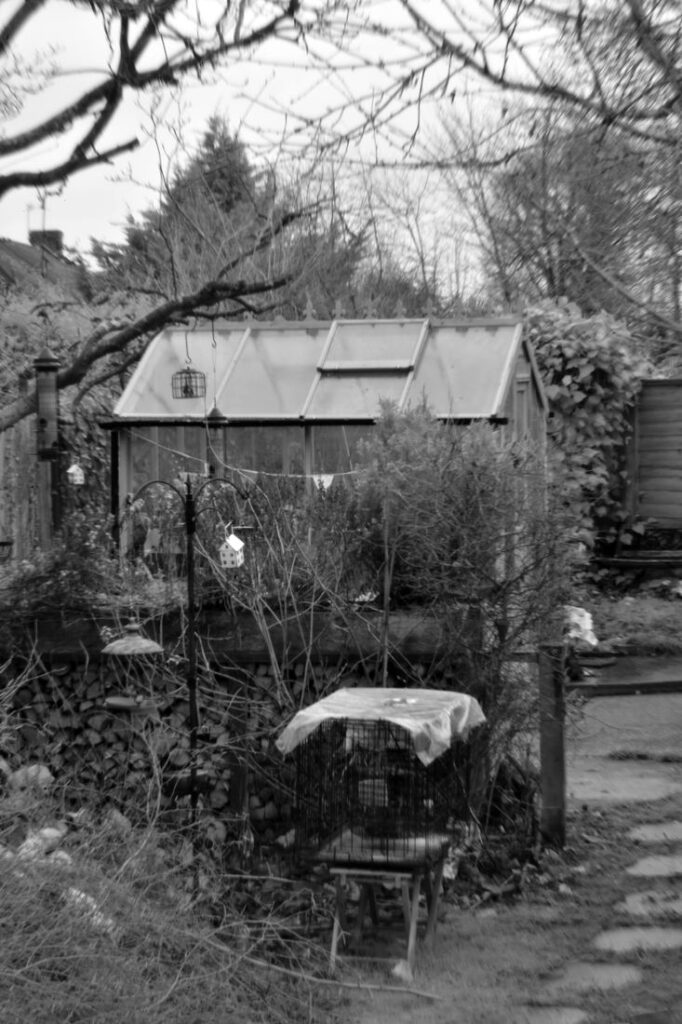
The Boyer lens does cover a full frame sensor, and there isn’t any noticeable vignetting at the corners. It certainly isn’t going to win any sharpness prizes, and I think is best described as ‘artistic’. However keep in mind that this is a single element, and in the images above it is dealing with visible, IR and whatever UV is present, so there will be a degree of chromatic aberration contributing to the image softness.
What has this achieved? I put an old camera lens into a modern autofocus body and managed to make a soft, autofocus lens. Great. Fascinating. But that is not the point here. This lens will transmit light down to around 300nm, so this is an autofocus lens with UV capability well down into the UVB region. With a cost of about 10GBP (Ok, granted that does not include the cost of making the Nikon autofocus body which was about 80GBP including the Thorlabs ring) it is at the cheap end of lenses when it comes to UVB capability. Using narrow band pass filters is likely to sharpen things up as well by reducing chromatic aberration. This could actually end up being quite a useful little lens. It was a fun build, and perhaps that is as important as anything else – keep work fun. If you’d like to know more about this or any other aspect of my work, I can be reached here. Thanks for reading and Happy Holidays.
